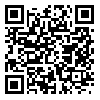Volume 28 - Supplementary
IBJ 2024, 28 - Supplementary: 401-401 |
Back to browse issues page
Download citation:
BibTeX | RIS | EndNote | Medlars | ProCite | Reference Manager | RefWorks
Send citation to:



BibTeX | RIS | EndNote | Medlars | ProCite | Reference Manager | RefWorks
Send citation to:
Beigzadeh M, Khaledian A, Amirian Z, Ramezani F, Hosseini A, Ghasemi A H et al . Mediating Role of Behavioral Intention in the Relationship Between the Constructs of Norm Activation Theory and Plastic Bag Consumption Behavior among Students of Saveh University of Medical Sciences. IBJ 2024; 28 :401-401
URL: http://ibj.pasteur.ac.ir/article-1-4838-en.html
URL: http://ibj.pasteur.ac.ir/article-1-4838-en.html
Mehran Beigzadeh 
 , Ali Khaledian
, Ali Khaledian 
 , Zahra Amirian
, Zahra Amirian 
 , Fatemeh Ramezani
, Fatemeh Ramezani 
 , Aida Hosseini
, Aida Hosseini 
 , Amir Hossein Ghasemi
, Amir Hossein Ghasemi 
 , Parisa Hosseini Koukamari *
, Parisa Hosseini Koukamari * 


 , Ali Khaledian
, Ali Khaledian 
 , Zahra Amirian
, Zahra Amirian 
 , Fatemeh Ramezani
, Fatemeh Ramezani 
 , Aida Hosseini
, Aida Hosseini 
 , Amir Hossein Ghasemi
, Amir Hossein Ghasemi 
 , Parisa Hosseini Koukamari *
, Parisa Hosseini Koukamari * 

Abstract:
Introduction: The status of plastic bag consumption in Iran is very concerning. According to unofficial information, the daily consumption of plastic bags in Iran is reported to be 500 tons; in the country, it is reported to be 3000 tons. Preserving and creating a healthy environment is so important that, in 1986, developing health-supportive environments was identified as the second most important strategy for promoting community health. In examining environmentally supportive behaviors, models such as the Norm Activation Model have received attention from researchers. This study aimed to investigate the mediating role of behavioral intention in the relationship between the constructs of the Norm Activation Model (NAM) and behavior.
Methods and Materials: This cross-sectional study was conducted with a random selection among 220 students in 2023. A questionnaire was used to assess behavioral intentions, comprising three items related to behavior regarding plastic use, seven items focused on awareness of consequences, as well as ascription of responsibility. Additionally, it included ten questions aimed at evaluating ethical beliefs in accordance with the norm activation model. A structural equation modeling approach was utilized to evaluate the proposed model. All analyses were conducted using SPSS v18 and AMOS v18 software. The indirect effects were tested using the bootstrap procedure in the SPSS Macro program for mediation effect.
Results: As a result of structural equation modeling, the proposed hypotheses regarding the relationships were generally supported. The moderating role of intention was identified in the relationships between awareness of consequences, ascription of responsibility, ethical belief, and behavior. The coefficients of the regression model confirmed the direct hypotheses of this research. The values of most fit indices indicate an acceptable fit of the proposed model with the data (df/X2 = 2.5; GFI = 0.9; AGFI = 0.92; CFI = 0.92; RMSEA = 0.04).
Conclusion and Discussion: This study confirms the appropriateness of the NAM and shows that this model has appropriate predictive power in understanding consumers’ intention to use plastic bags.

Methods and Materials: This cross-sectional study was conducted with a random selection among 220 students in 2023. A questionnaire was used to assess behavioral intentions, comprising three items related to behavior regarding plastic use, seven items focused on awareness of consequences, as well as ascription of responsibility. Additionally, it included ten questions aimed at evaluating ethical beliefs in accordance with the norm activation model. A structural equation modeling approach was utilized to evaluate the proposed model. All analyses were conducted using SPSS v18 and AMOS v18 software. The indirect effects were tested using the bootstrap procedure in the SPSS Macro program for mediation effect.
Results: As a result of structural equation modeling, the proposed hypotheses regarding the relationships were generally supported. The moderating role of intention was identified in the relationships between awareness of consequences, ascription of responsibility, ethical belief, and behavior. The coefficients of the regression model confirmed the direct hypotheses of this research. The values of most fit indices indicate an acceptable fit of the proposed model with the data (df/X2 = 2.5; GFI = 0.9; AGFI = 0.92; CFI = 0.92; RMSEA = 0.04).
Conclusion and Discussion: This study confirms the appropriateness of the NAM and shows that this model has appropriate predictive power in understanding consumers’ intention to use plastic bags.

| Rights and permissions | |
 |
This work is licensed under a Creative Commons Attribution-NonCommercial 4.0 International License. |





.png)
